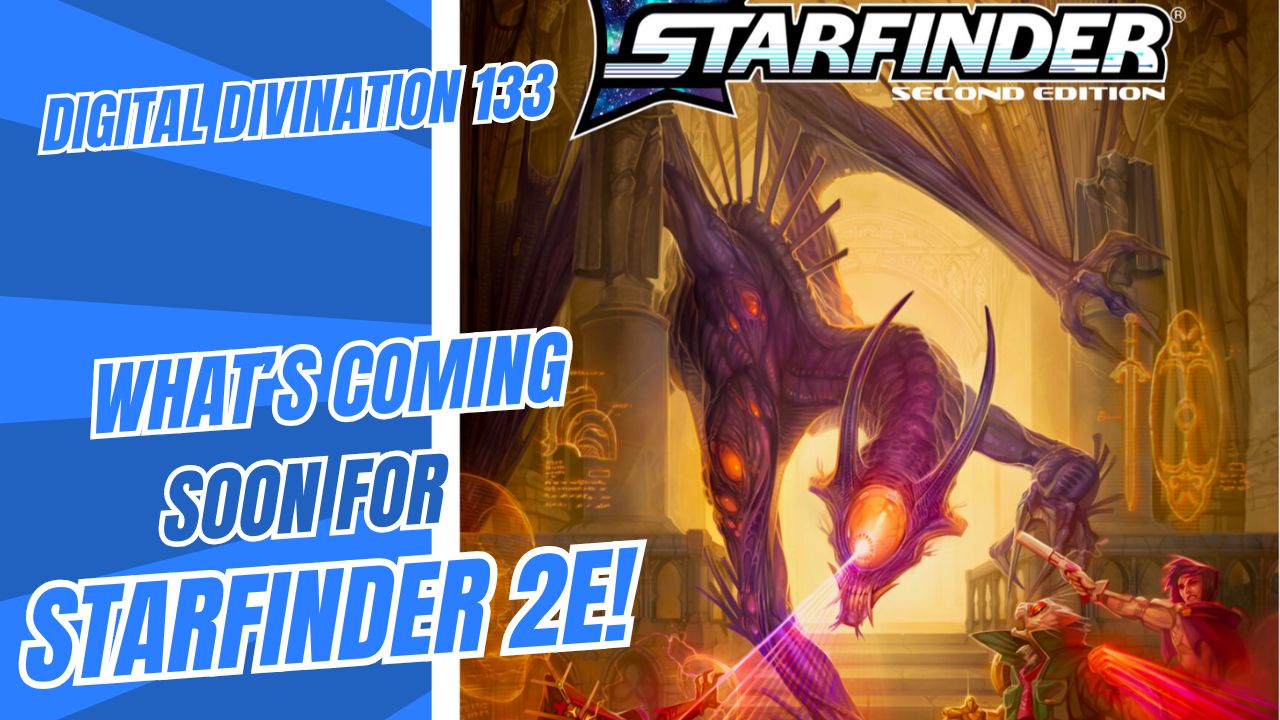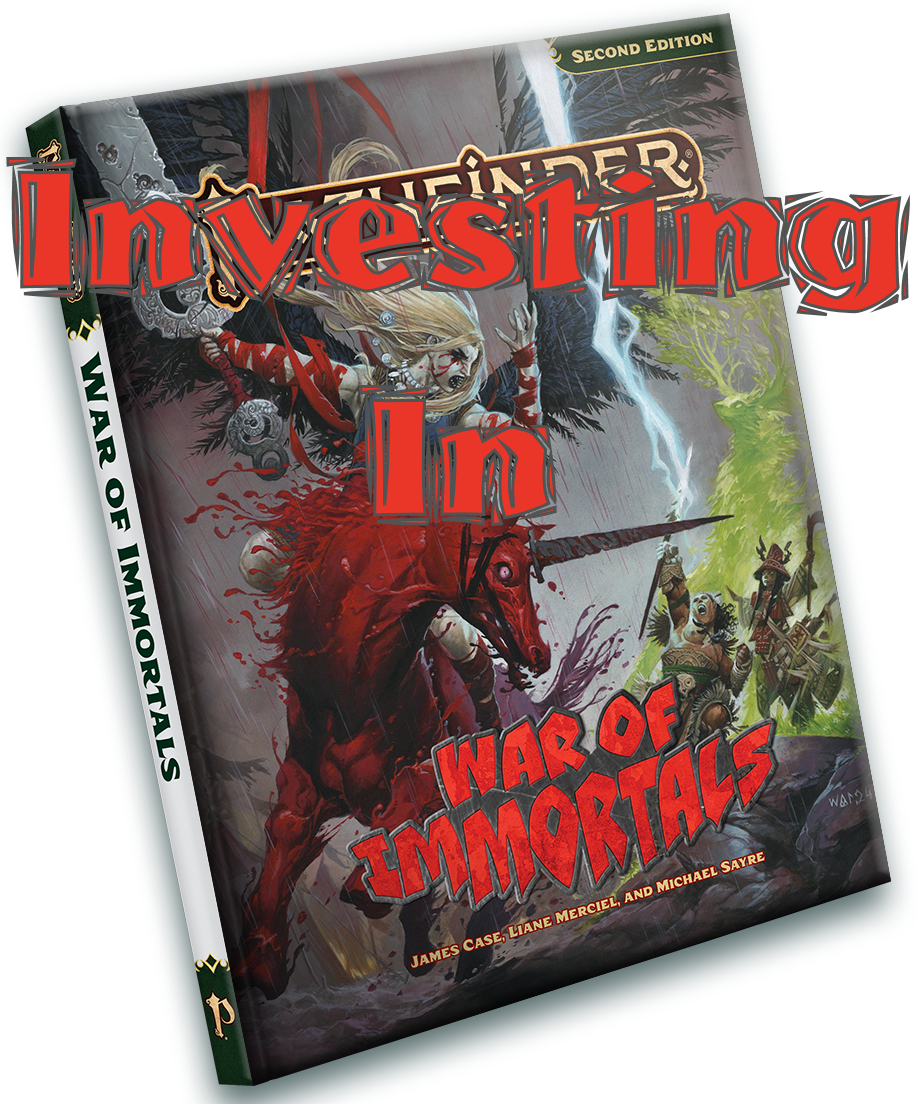To review the Player’s Handbook (PH) is to review Dungeons & Dragons. The game is that dependent on the content of this book. To top it off, Player’s Handbook is a bit of a misnomer. The first chapter defines players differently from Dungeon Masters (DM), but the DM, the Players, and anyone that wants to know anything about the game need this book. This book could have been called Dungeons & Dragons: The Core Rulebook.
Expectations
Again if someone is considering picking up a PH, they aren’t wondering about what options are available in this rulebook to enhance their character or game. They are either: a veteran player who has relied on the kindness of his fellow players or a downloaded copy (boooooo!); a new player interested in getting into D&D.
In the case of a new player, the PH does what every D&D manual should strive to do: Exceed expectations. Why should anyone expect anything other than a set of rules given in the most straight forward manner possible? Because a little shine takes off the text book feel and makes learning D&D a fun read.
At a Glance
This is a very attractive book, especially by comparison. I’m not sure when the decision was made, but the core rulebooks were given full covers that helped distinguish them from the supplements. This isn’t a hard and fast rule, unfortunately. The only thing that bothers me more than a complete lack of consistency is occasional consistency. It bothers me that the sequels to the Monster Manuel (MM II, III, and IV as of this writing) all have full cover graphics but the sequels to the Dungeon Master’s Guide and Player’s Handbook have boxed graphics on plain covers, making them look more at home with the first and second Complete series of books than the core rulebooks.
Inside, the full colour pages continue to massage the eye. The sketch-style of the chapter introductions are visually interesting, stand out, and are usually apt. The only chapter whose introductory art does not encompass the content is Chapter Four: Skills. In fact, this Chapter has very few graphics, many of which are generic and would be reused as space fillers in future supplements.
Special mention goes to Chapter Seven: Equipment. The entire PH armoury is laid out in scale to help visualize what your character wears and carries into battle. Gone are the debates between my friends about which one is the spiked ball on a stick: the mace or the morning star.
Highlights
Simplicity.
Anyone that ever played through the era of THAC0 has to appreciate the cleaner, easier to use style of the d20 system. No longer do players have to keep track of when they want a high roll and when they want a low roll. Very little math is required outside of addition. And the separation between races and classes is clear and well defined. The book has a single tone that is best described as social technical, like when your friend the genius is trying to explain biochemistry to you in terms you’d understand.
Diversity.
Simple and diverse? How? Think of the difference between a human sorcerer and a half-orc sorcerer. It is simple to see how one might be better at the role, and understand the different ways these two characters would be played. There you have an example of the diversity of the rules, the important ability to do whatever you want and know exactly how to do it.
Classes have abilities they share with every other member of that same class (all barbarians can Rage, for example). Feats are the abilities that separate members of the same class from one another. Because of the fully flexible Feat system, a player can make multiple characters of the same class and race and yet have entirely different options for each.
Flavour.
Dungeons and Dragons sets itself apart from most role playing games by maximizing the fantasy feel but minimizing backstory. This allows the game to expand infinitely without fear of contradiction. When reading the backstory for races, rarely will you find words that rank the race. Dwarves, for example, are described in their backstory as naturally attuned to stone, and they have the stonecunning racial ability to correspond with this. But they are not called the best known stone workers. If a designer ever wanted to create a race that was more attuned to stone than dwarves, it’s a matter of giving them a bigger racial modifier.
The best use of flavour is the use of the sample NPCs. What could have been simple examples of each class is instead the beginning of reoccurring characters throughout almost every D&D supplement. Krusk the half-orc Barbarian, Gimble the gnome bard, Jozan the human cleric, Vadania the half-elf druid, Tordek the dwarf fighter, Regdar the human fighter, Ember the human monk, Alhandra the human paladin, Soveliss the elf ranger, Lidda the Halfling rogue, Hennet the human sorcerer, Mialee the elf wizard, and Nebin the gnome illusionist are more than just samples, they are D&D’s main characters. Who doesn’t love seeing what they’ve gotten themselves into when each new supplement is released?
Low Points
Separation Between Player Class and Non-Player Class.
As a DM, it offends me when the PCs have access to abilities that NPCs are denied, and vice versa. A nice change from third edition to 3.5 was the reversal of what races the players were encouraged to play. Third edition gave players the six playable races in the PH and discouraged making characters out of other fantasy races represented in the Monster Manual. No more! Now a player can be a Centaur, Pixie, or Dragon, or many other intelligent races. It’s still easier to play a human or elf, but the option is now there.
Strangely positive so far for a low point review. Well while the game has evened many of the disadvantages PCs had compared to NPCs, NPCs received no such bonus. No chapter is guiltier of this than Chapter Four: Skills. Diplomacy is defined as the ability to change the attitude of NPCs. It’s also said that NPCs can not change the attitude of PCs through skills. Sure, it could be argued that because this is role-playing, the players should have the right to make all decisions for their characters. But it would certainly be nice for the sake of all those NPCs at the mercy of a charismatic PC if there was some way the system could be redefined in a fair way. I just feel bad that a professional politician NPC with a +20 modifier to Diplomacy is as able as a stuttering street beggar at convincing the PCs of something.
Craft and Profession Skills
Really, I love skills. I think they chose the right categories of skills to do just about anything in D&D. So it’s disappointing when one of the important skills is handled poorly. So often I’ve had characters with backstories that would best benefit from a few ranks in a Profession skill. But I can’t bring myself to basically waste valuable skill points. A week of work earns about twenty gold pieces. A pittance that a character barely has the opportunity to use. Maybe it’s just how I play, but it’s rare a character knows he’ll have nothing to do for a week straight. And if he does have that time, there are more noble and profitable things to do than coble. There are a few Profession skills that could be useful with different mechanics, like cook, sailor, or semester, but overall it’s a pretty useless skill.
Chapter Six: Description
At eight pages, everything the core rulebook could cover on your character’s description is summed up in the shortest chapter. A sizeable amount of these eight pages is taken up describing the core gods. Perhaps this is the reason for players that can’t see their character beyond the stats on a sheet.
Juicy Bits
The entire book wets your pallet. If you’re new to the game, do not skip the fluff in favour of the crunch. Game sessions are defined by the moments when the background comes to the foreground, when a dwarf can’t help but bicker with an elf no matter how like-minded they are, or the exchanges of a lawful good paladin and chaotic neutral bard each trying to show the other the proper way to live.
Multiclassing has never worked so well and is definitely a reason to dive into D&D 3.5. The ability to shape a unique class out of two different ones is a great advantage for a player with long-term goals for his character .
Personal Experience
I’ve played a gnome fighter/ranger, a goliath (Races of Stone) cleric, a raptoran (Races of the Wild) druid/wizard, a human rogue, and a human hexblade (Complete Warrior). And as a DM, I’ve used virtually every race and class but monk. I’m a big fan of using options from other books, but there’s no escaping the Player’s Handbook. It is entirely possible to create an effective character, except maybe a cleric or wizard, without using a single PH option other than skills. However, this would leave you with a bizarre ultra specialist who forwent the basics. If you want a challenge and an opportunity to wait around to become useful, more power to you. But for someone just trying to make a character that’s fun to play, start with the PH and go from there.
For the record, that gnome fighter/ranger was the best character I ever played. Hard to hit because of his small size, insanely durable thanks to racial bonus to constitution, and when armed with spring attack, he was a jumpy little thing that ran in, laid down the hurting, then left. Ah Karkerkast, gnome Troll Slayer and the crotchetiest little person this side of Salacious Crumb.
Overall
The Player’s Handbook is Dungeon & Dragons’ spine and soul. It is the most important book in a gamer’s library and the most essential of the core rulebooks. There are still a few mechanical flaws in the game, but overall the almost boundless potential of this game will keep D&D relevant for years.
If you liked this book…
Then you like Dungeons and Dragons.




Leave a Reply